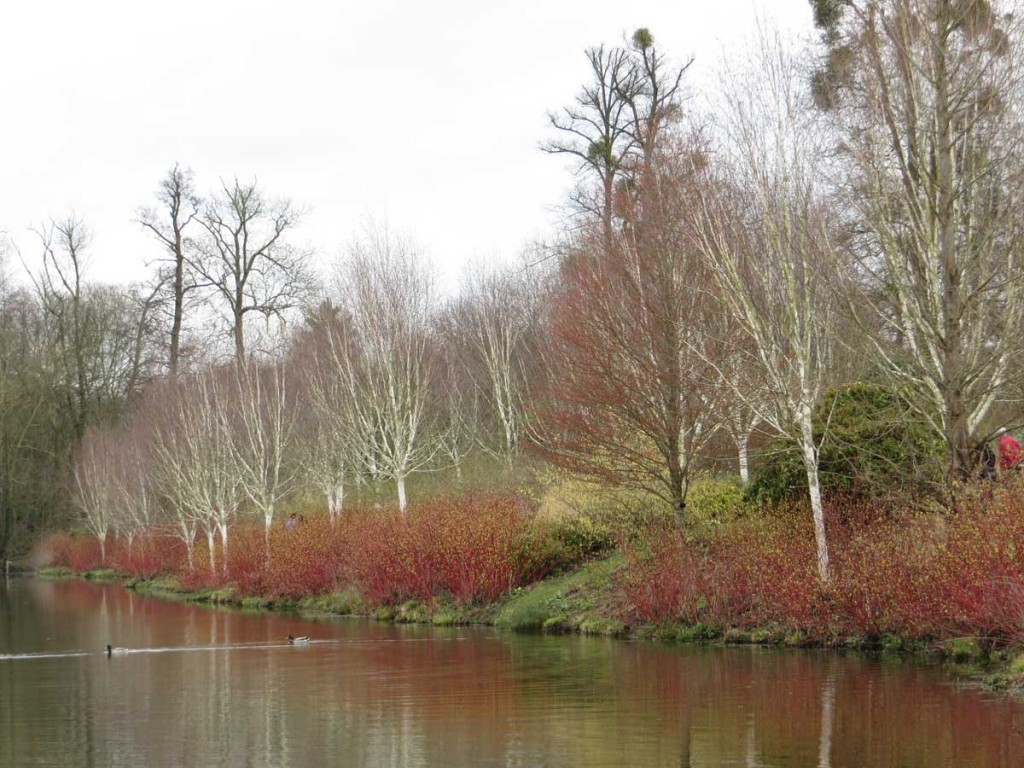January is difficult for colour in the garden. For inspiration I would visit Ness Botanic Gardens on the Wirral or Dunham Massey Gardens near Altrincham and enjoy the wide variety of colour and interest from flowers, foliage and bark.
In mild periods in January the winter heather Erica carnea varieties, will give colour from pink and white flowers. When a few varieties are grown together on a sloping bank, they look spectacular. Although they like a well drained acid soil in sun, they will tolerate slightly alkaline soils.

Bark is one of the main delights in winter. I love the red and yellow stems of Cornus or dogwood which contrast well against the dull grey brown of deciduous shrubs. If you have plenty of space and can position it well away from houses, a silver birch, Betula jacquemontii with white bark looks lovely in winter. Plant around it with the red stemmed Cornus alba Eligantissima and yellow to orange stemmed Cornus sanguinea Winter Beauty. Then scatter around clumps of snowdrops, crocuses and early small daffodils for a wonderful winter show from December to March.

Lastly, my choice of winter flowers is dominated by the magnificent Hellebore orientalis varieties. These robust plants with leathery leaves (which I cut off in November so you can see the flowers) will flower throughout winter with a show of white, pink and plum purple colours. They will grow in sun and light shade and are good for heavy clay soils but also cope with dry shade and well drained soils. Just leave them in position for a few years and the plant will clump up. They also seed well and you will often find tiny plants growing around the base which you can grow on and spread around the garden. Do beware that the sap from the plant will cause severe vomiting so always wear gloves when handling the plant and wash your hands afterwards. It is best not to grow them if children are around.

Work to do in the garden? Finish pruning shrubs and start pruning apples and pear trees. Mulch the soil with organic matter such as compost from your compost bins, well rotted manure or get bags of soil improver from the recycling centre. Put a layer 3 to 4cms deep over any bare soil and the worms will gradually take it down for you.
